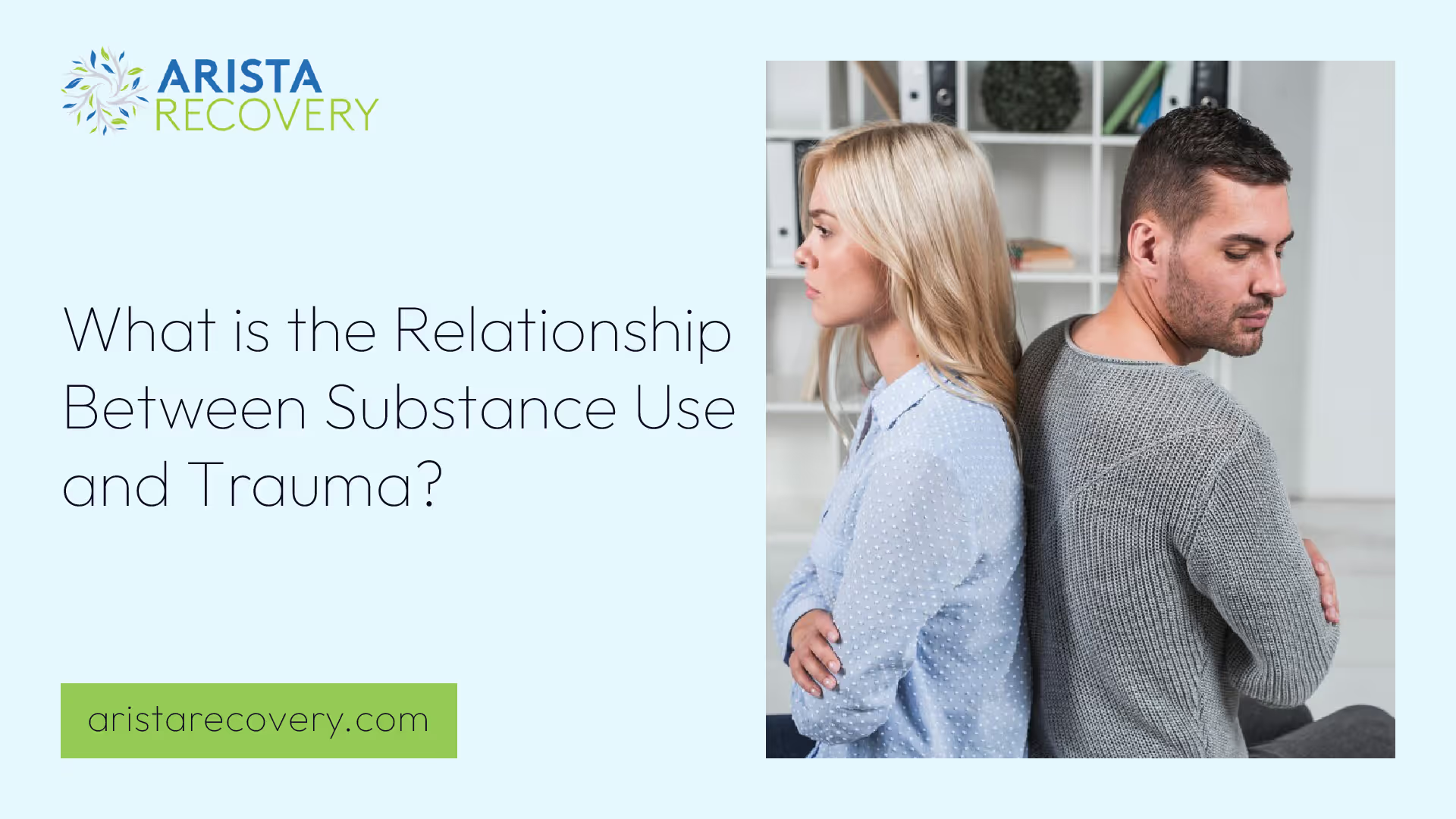What is the Relationship Between Substance Use and Trauma?

Substance abuse does not happen in a vacuum or appear overnight. For those who use drugs and alcohol, there is almost always an underlying issue that has caused them to turn to substances for relief. Trauma is one of the most common underlying factors in people developing a substance abuse problem. The relationship between addiction and trauma is complex, but the effects of both are often debilitating to the user and their family.
This article will explore the relationship between substance use and trauma. You will learn more about the signs of trauma and the risk factors that lead to addiction. You will also learn where to find specialized treatment for addiction and trauma. Arista Recovery is one of the Midwest’s premier drug and alcohol treatment facilities. We offer evidence-based therapies, expert support, and individualized drug and alcohol therapy in Kansas City. Call us now to learn more

What Are the Signs of Trauma?
When discussing the relationship between substance use and trauma, it is important to understand what trauma is and its signs. Simply defined, trauma is the lasting emotional response resulting from living through a distressing event that can include the following:
- The sudden death of a loved one or friend
- Living with a serious illness
- Experiencing a natural disaster or terrorist attack
- Physical, sexual, or emotional abuse
- Being a victim of a crime such as a robbery, mugging, or assault
- Living through war or being a veteran experiencing combat fatigue
When people experience trauma, they relive those distressing moments through vivid flashbacks. People may also experience nightmares and severe anxiety. Those affected by trauma often isolate themselves from others and avoid places that may trigger their symptoms. Common signs of trauma include the following:
- Severe emotional distress or physical reactions to something that reminds one of the traumatic event
- Trying to avoid thinking or talking about the traumatic event
- Negative thoughts about oneself, other people, or the world
- Hopelessness about the future
- Memory problems
- Difficulty maintaining close relationships
- Feeling detached from family and friends
- Feeling “numb”
- Being easily startled or frightened
- Always being on guard for danger
- Self-destructive behavior, such as drinking too much or driving too fast
- Trouble concentrating
- Irritability, angry outbursts, or aggressive behavior
What Causes Addiction?
Addiction is a complex and progressive disorder with no single cause. Instead, there are a multitude of causes and risk factors that make people vulnerable to substance abuse. Perhaps the most significant risk factor is a family history of addiction and a home environment where drug use is encouraged. Another risk factor is mental illness, such as anxiety, depression, or PTSD. Other risk factors include:
- Peer pressure
- Social media pressure
- Starting drug use early in life
- Taking drugs that are highly addictive
What is the Relationship Between Substance Abuse and Trauma?
The link between substance abuse and trauma is very strong. In many cases, people who experience trauma will use drugs and alcohol as a way to cope with their feelings. While trauma and PTSD are highly treatable conditions, many people will not seek professional help due to stigma and what others may think. Substances can help numb people and mute their emotions, but it is a blanket solution at best. Without addressing the underlying causes of trauma, those feelings will grow worse over time. Additionally, people will start taking larger quantities of substances and may develop a dependence or even an addiction to substances.
On the other hand, people who abuse substances first are more likely to develop trauma. This is due to the fact that substances lower inhibitions and increase risky behaviors. It is possible for people to experience an intense and harrowing event (i.e., being involved in a serious car accident, sustaining injuries as a result of a fall, contracting a serious sexually transmitted disease), and it significantly diminishes their quality of life.
How to Find Dual Diagnosis Trauma Treatment in Kansas City
Addiction and trauma go hand-in-hand, and the relationship between the two can create long-term implications for the user, their family, and other loved ones. If you or a loved one are experiencing substance abuse and trauma, a specialized dual diagnosis program can help you reclaim your life. As one of the Midwest’s top-tier dual diagnosis treatment centers, Arista Recovery offers comprehensive treatment services that are evidence-based and personalized to meet your unique and specific needs.
Our time-tested dual diagnosis program in Kansas City includes the following services:
- Detox
- Inpatient care
- Outpatient care
- CBT and DBT with individual and group therapists
- Support groups geared toward mental health disorders
- Individual sessions to target both SUD and mental health disorder
- Goal-setting
Quality treatment for addiction and trauma is just a phone call away. Contact Arista Recovery today and start your journey toward lasting wellness.
You’re not alone in this.
When mental health challenges and addiction intersect, it can feel isolating. At Arista, we offer compassionate, evidence-based, and trauma-informed care to help you heal, grow, and move forward.
You’re not alone in this.
When mental health challenges and addiction intersect, it can feel isolating. At Arista, we offer compassionate, evidence-based, and trauma-informed care to help you heal, grow, and move forward.
Support that moves with you.
You’ve taken a brave first step. At Arista Recovery, we’re here to help you continue with best-in-class care designed for long-term healing and support.
.webp)






